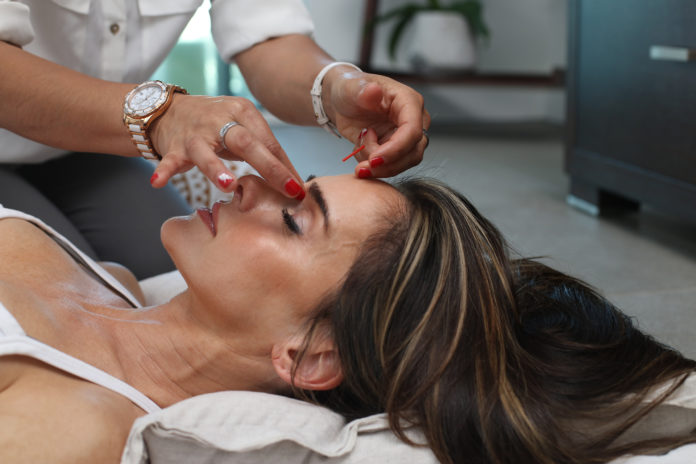Botox and Juvederm are a million-dollar industry. In 2003, just a year after botox treatment got approved by the FDA, over 2.2 million cosmetic injections were used. But, the immediate results and fast recovery period have made them even more popular today.
Botox is becoming mainstream among both male and female patients. In 2018, over 7.4 million procedures were done in the U.S. With American men getting more than 500,000 botulinum toxin injections each year.
Although manufacturers label these cosmetic procedures for younger adults, there is a growing popularity for Juvederm and Botox for seniors as well. The question is, is it healthy for seniors? How do these two procedures compare? If you too, want to get rid of the wrinkles, then you need to know exactly what you are investing in. This simple guide will show you all the practical information you need.
Botox Vs. Juvederm
Both Juvederm and Botox are cosmetic injectables designed to treat wrinkles. But, they are completely different in terms of the active ingredients used. Juvederm contains HA (hyaluronic acid), which is meant to plump up the skin. It is a non-invasive procedure that adds volume to the skin.
People use Juvederm for lip lines, outlining the mouth, nose, adding volume to the lips, and managing the wrinkles. Whereas botox provides a solution that temporarily relaxes the facial muscles. It contains a neurotoxin that can treat vertical lines, wrinkles, muscle spasticity and make the wrinkles appear smoother.
Both treatments vary based on efficacy, cost, convenience, and safety. Here, you will take a quick look at all the things that set them apart. That way you will have an easier time deciding which might be a better choice.
- Efficacy
Both cosmetic treatments are effective. But, Juvederm lasts longer and works faster. Botox, on the other hand, can take a couple of days to work and wears off in just a few months.
Based on a 2013 report, the reason Juvederm has longer longevity is because of the high HA (Hyaluronic acid) concentration and cross-linking. That’s why the procedure gets better persistence compared to some of the other fillers on the market.
Botox is different. You will need 3 to 4 days to spot noticeable results and weeks for maximum results. The cause for the delay is the binding mechanism. Botox binds at a connection point between nerves and muscles.
These chemical messages need time to influence muscle contraction and affect wrinkles and lines. But, regardless of the treatment you use, you will still need follow-ups to maintain the desired effect.
- Cost
Botox is the cheaper alternative. You will need multiple units, in some cases 20, to get the desired look. The average total cost is $550. Juvederm is not that easy on the wallet. It has a slightly bigger average price of $600 per injection.
- Convenience
When it comes to convenience, both of these treatments take a couple of minutes to complete. So, you won’t be spending too much time at the clinic. The only real setback is that when you work with bigger surfaces, the treatment takes longer. Usually an hour or more. So, that’s something to have in mind.
Note: Even though Juvederm and Botox are practical treatments, you should always look for a licensed medical doctor to perform them. Otherwise, you risk exposing the skin to serious side effects and reactions.
- Safety
When you think about botox for seniors, the first thing that comes to mind is safety. Since seniors are more prone to having weaker facial muscles, wrinkles, tissue sagging, and less elastic and thinner skin, they are not expected to respond well to botox treatment.
According to studies from the National Institutes of Health, a single botox treatment might help soften the wrinkles, but more procedures will be necessary to obtain a noticeable difference. Special site injections for botox for seniors are another thing to consider.
Take forehead lines treatment, for example. To deal with the lines on the forehead, people will need injections on the frontalis muscle. This in seniors can interfere with their vision because older people raise their eyelids and eyebrows to see.
Seniors also have extra skin under the brow. It can get worse with botox treatment. To top it all off, the delicate skin is making botox for seniors, not a good choice since their skin can become vulnerable to bruising.
Key Takeaway
Overall, Botox and Juvederm are both effective cosmetic treatments. They might create similar results but are packed with completely different ingredients. Because of that, their efficiency, convenience, and cost vary. When done by a certified medical expert, both treatments are considered safe.
However, it’s crucial for seniors to talk with a physician before considering any cosmetic procedure. Doctors will take into account their skin fragility, wrinkles, facial anatomy, and medical conditions. That way, they can reduce the risk of side effects. Simply put, with precautions, seniors can get the right kind of results.
References
https://www.plasticsurgery.org/documents/News/Statistics/2018/plastic-surgery-statistics-report-2018.pdf
https://www.ncbi.nlm.nih.gov/pmc/articles/PMC2684082/
https://www.ncbi.nlm.nih.gov/pmc/articles/PMC2684082/
https://www.ncbi.nlm.nih.gov/pmc/articles/PMC3739705/
https://www.healthline.com/health/juvederm-botox



